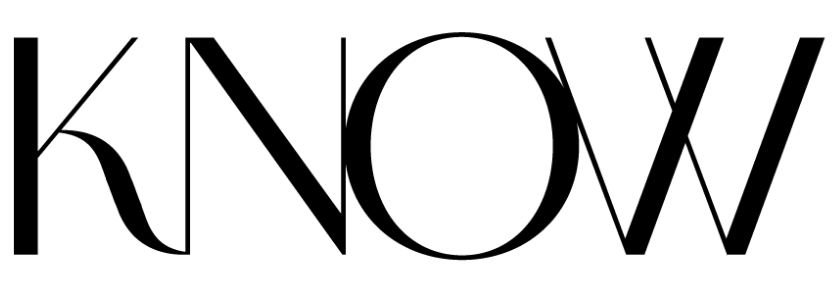
Leading female business owners are all driven by a higher purpose. It’s what makes them stand out and helps them to achieve goals that would be out of reach if they weren’t built to withstand the inevitable struggle, roadblocks, and failures that are part of the entrepreneurship journey. However, being purpose-driven isn’t the entire business plan. Having your own business ultimately means providing value to those you serve.
The seven characteristics listed below are all part of the formula high-achieving leaders abide by for creating value in their businesses. Regardless of whether you have a small business, a startup, or an exciting business idea, once you master them as an entrepreneur, you will position your business for opportunity, impact, and success.
Successful, purpose-driven female entrepreneurs…
- Have a Mission – How will you know if you’re successfully fulfilling your mission if you don’t have one? Your mission statement can’t just be hollow platitudes or a statement inspired by your favorite quote. It must be specific, time-oriented, and executable.
Think of it as the directive for you and everyone in your organization. A great mission statement should inspire you but it should also provide you with guiding principles and critical actions to take every day.
- How do you know what products or services to offer as a startup? Check to see if they are aligned with your mission.
- What market should you be in? Your mission statement will let you know.
- Who should you hire? Only the candidate who matches up with your guiding principles.
This is the critical first step to having a successful business. If you have a business already and you skipped this step, do it now. Once you create a clear mission for your business, everything else…everything else falls into place.
- Start with Strategy – The world can get really weird sometimes, #amIright? If your business, from your signature product to what social media platforms you’re on, isn’t connected through a cohesive strategy, things can get pretty unfocused and confusing really quickly.
- Did you recently have to search, “how to pivot a business” in Google? If you did, chances are you don’t have an agile brand strategy.
- Are you constantly seeing peaks and valleys in your new customer acquisition? You need an automated and repeatable marketing strategy.
- Do you bounce from social media platform to social media platform, using the latest hack or tactic? This is a symptom of not having a content strategy.
Once your mission is in place, take the time to map out your strategies for operations, marketing, and growth. Then, be sure to track the metrics that will let you know if you are making progress.
- Deliver a Clear Message – If you don’t have a clear and compelling message, your great business may get lost in the unrelenting noise of the internet.
“…the best products don’t always win in the marketplace, we don’t always buy the cheapest product, or the most expensive, we buy the products we can understand the fastest.”
-Don Miller, CEO StoryBrand
Your brand message is the throughline for all of your marketing collateral so it’s important to get it right.
Spoiler alert – Your brand “story” isn’t about your brand. It’s the story you invite your audience into that guides them to the solution you offer. If you use the elements of a story to craft your brand message, your audience will pay attention. Storytelling in marketing creates what is known as narrative transportation. It transports your audience into a story they want to engage in.
Once you’ve created your brand messaging story, focus on making your message clear and consistent so your ideal client knows why you are the go-to business that can solve their problem.
You can learn exactly how to craft your own StoryBrand message in an online live workshop.
- Focus on Effective Marketing – Do you suffer from RAOM (Random Acts Of Marketing)? If you don’t have an effective and automated sales funnel in place, the answer is likely “Yes”.
Business success is highly influenced by marketing. Your marketing funnel should provide a way for your audience to get to know you and allow you to stay ‘top of mind’ and random tactics won’t get you there.
The essential elements of a funnel are:
- A landing page (or homepage of a website) that clearly tells your specific audience, what you do, how it makes their life better, and how to get it. It should have a strong call to action and a ‘transitional call to action’. The transitional call to action leads to number 2.
- A lead-generating asset. This can be a pdf checklist or template, a demo, discount, or educational masterclass video. What you choose here will depend on who your ideal client is and what would be of the most value for them.
- An email marketing series. A nurture campaign will keep your brand visible in your clients’ inboxes. A sales campaign is shorter and meets the more immediate needs of a lead who is in the 15% of people who will buy in the first 6 – 8 months.
Did you know that of the 50% of your market that will buy from you, only 15% will buy within the first 6 months? The other 85% will buy up to 18 months later. But, guess what? If you don’t have a nurture campaign to stay visible to them, they will forget about you.
Once these three elements are set up and automated, they work for you like a sales-generating machine. Now all you have to do is make sure your perfect customers find you when they are searching for an answer. This leads us to #5.
- Are intentional about Communication – Communication includes social media, speaking, PR, blogs, and videos. These are the pieces of content that introduce you to the world and convince them to click on a link and go to your landing page or website.
Your communication has to be consistent, timely, and relevant to the people you want to reach on the channels they are already on.
BTW: A note about social media
Just because a channel is popular doesn’t mean it will return the best results for you. So, stop wasting your time posting so often. You might get a lot of followers because of your lovely images or fun videos but are your followers the same as your ideal customers? For example, If you have a high-ticket course for HR executives your best channel is LinkedIn, not IG.
Bottom line – Are they buying what you’re selling? If not, stop stressing about that channel. You’re welcome.
All of your content should follow the same story narrative as your website, lead generators, and email marketing. Consistent communication in both frequency and message is invaluable in today’s online marketplace.
- Excel at Negotiation – Are you conflict-averse? Most women are. According to The Big Five personality theory in the trait of agreeableness vs. disagreeableness, women, on average are more agreeable than men – check out the study here.
Agreeableness includes these traits: friendly, cooperative, and compassionate, so it’s not a surprise that this is a trait in which women excel.
That sounds great but, as a female founder, will it hold you back in negotiations?
Should you learn to be more assertive/ disagreeable? Not necessarily.
In a recent study published in Journal of Applied Psychology, the authors found there was a significant backlash to women who amped up their assertiveness as a tactic for handling negotiation.
Negotiation, just like any other skill, can be learned. The first thing you need to realize is that you are always negotiating. Do you change your schedule to accommodate a co-worker? Negotiation. Have you discussed with a client where to meet for coffee? Negotiation.
To negotiate well, you need to understand what type of negotiation you are in, collaborative or competitive. Then, learn to apply a repeatable process to come out on top.
- Execute! Finally, you may have seen the six points above before today. If they aren’t new to you or at some point you thought, “I know, I really need to do this.” Then, I will leave you with a quote that all successful female entrepreneurs take to heart:
“The thing that keeps a business ahead of the competition is excellence in execution.” Tom Peters
Every purpose-driven female entrepreneur can learn the ‘how to’ of the first six important elements. But, the one trait that matters most is number seven. Taking action will always be the most important element of success for women entrepreneurs.
Now, go out and get it done!
